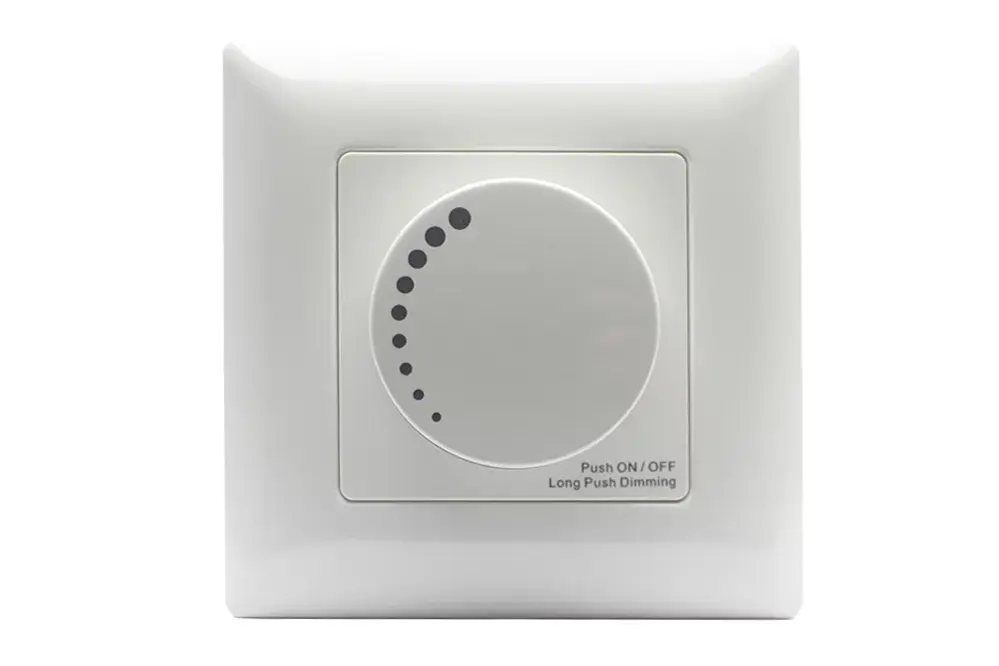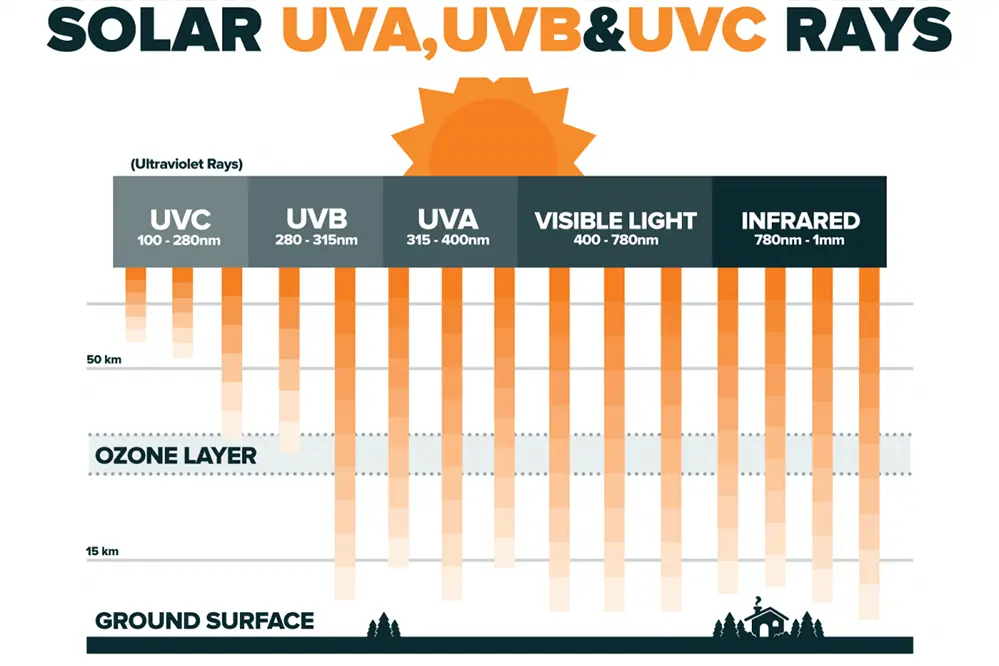What if you could transform the ambiance of your home with just a simple adjustment, like installing a dimmer switch? What is a TRIAC dimmer, and how can it revolutionize your lighting experience? These questions often arise when homeowners seek to enhance their living spaces.
Many people struggle with finding the perfect lighting balance. Too bright, and it feels sterile; too dim, and it becomes impractical. Common misconceptions about dimmers, such as their complexity or cost, often deter individuals from exploring this option.
TRIAC dimmers, using advanced triac technology, offer a practical solution, providing precise control over light intensity. They not only enhance the aesthetic appeal of a room but also contribute to energy savings and increased bulb lifespan. Understanding these benefits can change the way one approaches home lighting.
In this guide, readers will learn about the mechanics of TRIAC dimmers, their advantages, and how to install them. Additionally, the article will address common concerns and provide practical tips for optimal use.
Ready to transform your lighting experience? Continue reading to uncover the secrets of TRIAC dimmers and how they can elevate your home environment.
Introduction to TRIAC Dimmers
Delving into the world of lighting control, TRIAC dimmers offer a sophisticated solution for managing illumination.
In 1972, engineers introduced the TRIAC, a pivotal innovation in electronic switches. It provides efficient, reliable control over alternating current (AC) loads, notably lighting systems.
TRIAC stands for Triode for Alternating Current, and it functions by rapidly switching the circuit on and off, effectively modulating the power delivered to the light fixture.
This precise control over power regulation allows for smooth, flicker-free dimming, setting it apart from rudimentary dimming technologies that might cause inconsistent illumination.
As automation becomes more prevalent, understanding TRIAC dimmers empowers users to create personalized, energy-efficient lighting environments.
What Is a TRIAC Dimmer?
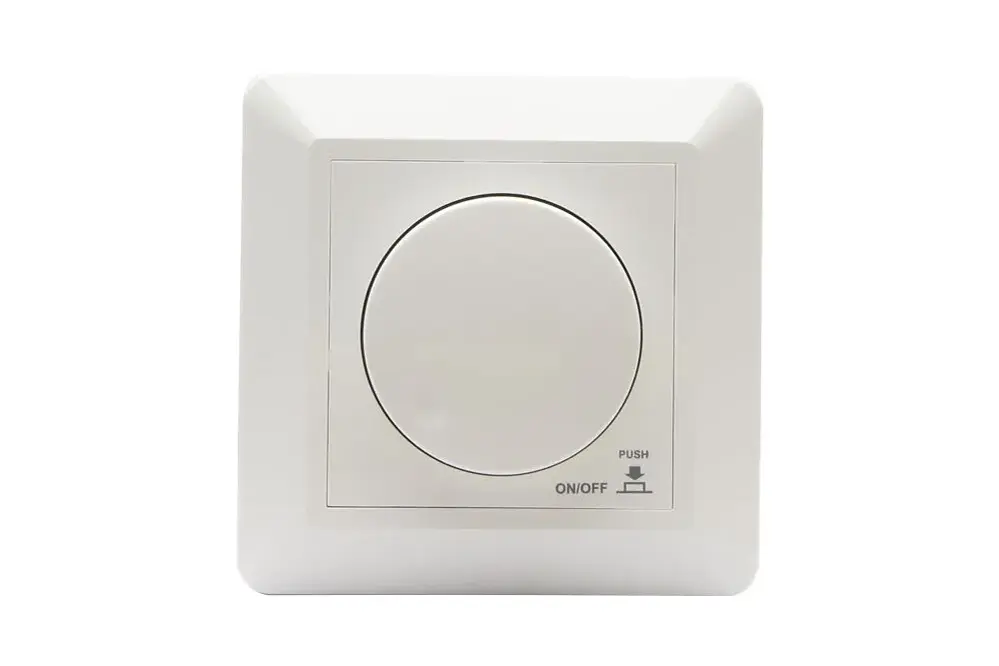
A TRIAC dimmer is a lighting control device.
Specifically designed to manage light intensity, a TRIAC dimmer adjusts the power delivered to lighting fixtures. This modulation is achieved through the rapid switching of the electrical current, ensuring a seamless and flicker-free dimming experience. This technology has become critical in modern lighting solutions.
Initially developed in 1972, TRIAC dimmers revolutionized lighting control.
They operate by using a semiconductor device that can control power for all parts of the AC waveform. This capability allows for precise adjustment from full brightness to complete darkness without perceptible steps.
Incorporating TRIAC dimmers into lighting systems not only enhances aesthetic appeal but also contributes to energy efficiency. As energy costs and environmental concerns rise, the adoption of TRIAC dimmers in both residential and commercial settings demonstrates a forward-thinking approach to sustainable living.
How Does a TRIAC Dimmer Work?
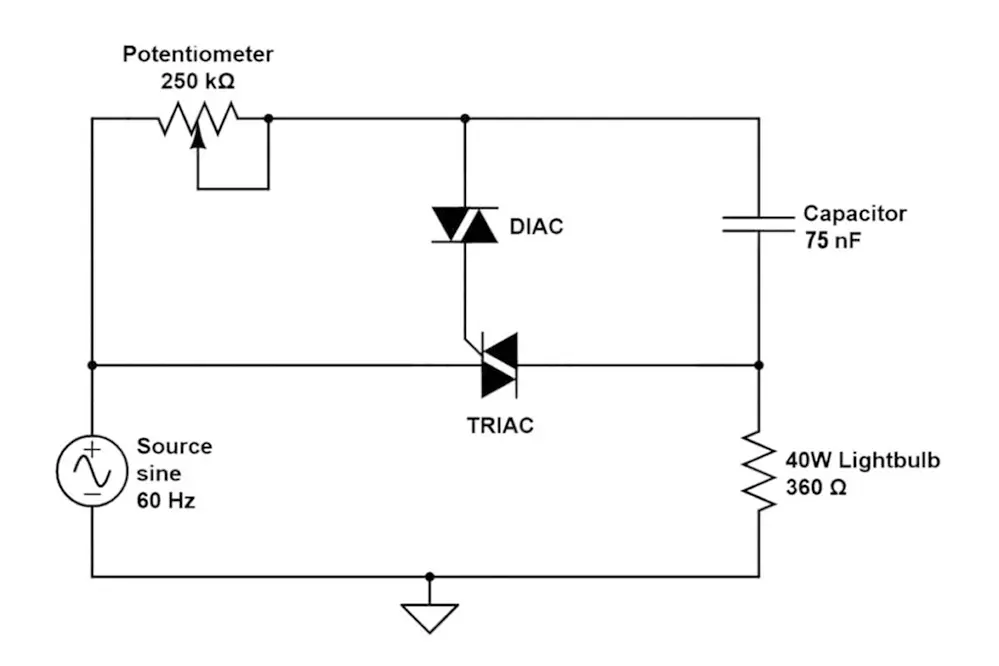
At its core, a TRIAC dimmer operates by phase-cutting the AC voltage supplied to a light fixture.
To achieve this, the dimmer initially delays the current flow through half the AC wave cycle, then triggers it to create the desired dimming effect, allowing for smooth adjustment.
The term “phase-cutting” or “phase-control” essentially refers to the ‘chopping’ of the AC wave.
Understanding Thyristors
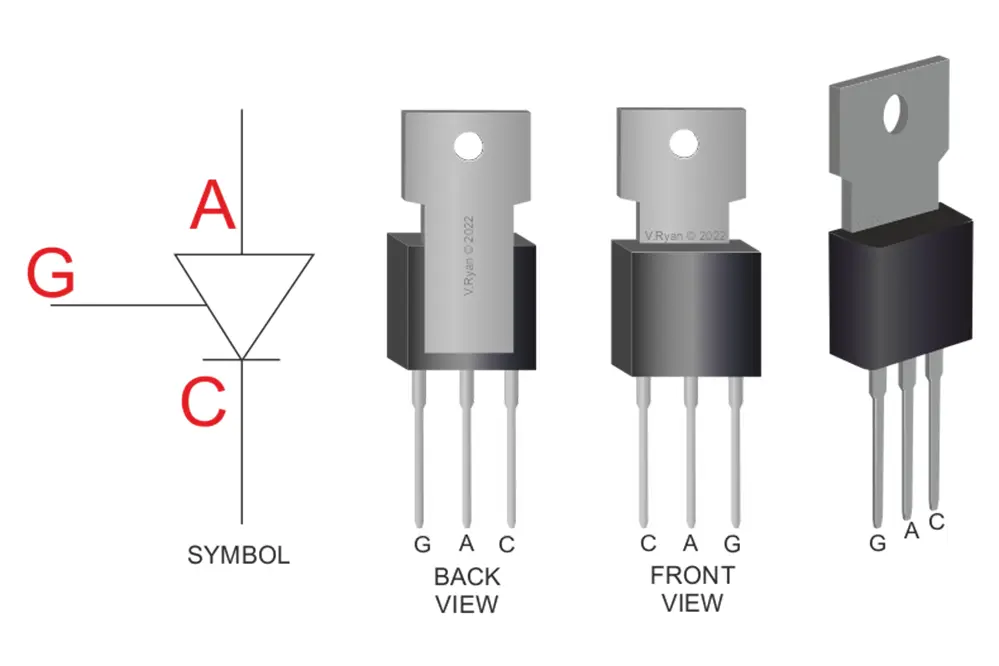
Thyristors, including TRIACs, control electric power, crucial in many modern applications. They operate as switches, regulating current flow in circuits, which fosters efficient power management.
A widely known form of thyristors is the silicon-controlled rectifier (SCR). This device operates by controlling the time and angle of current flow, demonstrating the functional versatility of thyristors.
SCRs facilitate controlled power conversion in high-voltage direct current (HVDC) systems.
Thyristors find extensive usage: in lighting dimmers, motor speed controls, and various industrial processes. Their ability to handle high voltages and currents ensures they remain integral in innovative power solutions, supporting advancements in technology and sustainable practices.
Capacitor Automation
Capacitor automation involves using capacitors to improve the efficiency and functionality of circuits.
Automated capacitors adjust rapidly to changing electrical conditions.
These adjustments are essential in ensuring consistent power delivery and optimizing overall system performance in residential, commercial, and industrial applications. Capacitors also help in reducing power loss, thereby contributing to energy conservation.
Ultimately, capacitor automation is indispensable in the realm of advanced power management, as it plays a critical role in refining the quality and reliability of electrical systems. By integrating smart technology, capacitors can “learn” to better handle fluctuations, enhancing the overall efficiency of electrical networks.
Potentiometer Control
Potentiometer control represents a foundational principle in the realm of TRIAC dimmers, merging simplicity with versatility.
These devices allow users to manually adjust the resistance within a circuit.
This adjustment alters the voltage levels reaching a light fixture, enabling users to fine-tune brightness with precision and ease. Potentiometer-based TRIAC dimmers offer an intuitive, tactile approach to light control that resonates with both professionals and amateur enthusiasts.
Their flexibility makes them indispensable for those who seek a balance between technological advancement and user-friendly interfaces. By providing a straightforward method to manipulate electrical flow, they embody an elegant solution to complex illumination needs. This dynamic control is vital for creating optimal environments in diverse settings.
AC Dimming vs. DC Dimming
When exploring dimming solutions, understanding the difference between AC and DC dimming is crucial.
AC dimming typically involves adjusting the power supplied to an alternating current (AC) light source, such as incandescent or halogen bulbs, by altering the waveform. This method benefits from extensive compatibility and has been widely used in residential and commercial settings due to its proven performance.
Notably, TRIAC dimmers are an example of AC dimming technology. They modify the power delivered to the light by chopping parts of the AC sine wave, seamlessly controlling brightness while maintaining efficiency and reliability.
Conversely, DC dimming involves controlling light levels in a direct current (DC) powered system, mainly seen in LED lighting. This type of dimming adjusts the current or voltage directly supplied to the LEDs, allowing for precise brightness control. Efforts to develop compatible DC dimming technologies have been increasingly effective, advancing the versatility of lighting applications. Each dimming approach offers distinct advantages, shaping the illumination landscape with tailored solutions for varying requirements.
Leading Edge vs. Trailing Edge Dimming
Leading edge and trailing edge dimming techniques are central to understanding light control, shaping the ambiance of various environments.
Leading edge dimming, also known as forward phase-cutting, alters the power flow by chopping off the initial portion of the AC waveform. This method is particularly common in controlling incandescent and halogen lighting, providing smooth and reliable dimming performance.
On the other hand, trailing edge dimming, or reverse phase-cutting, removes the latter part of the waveform. This technique is typically used with modern LED and CFL lamps, as it minimizes vibrations and noise that might arise with more sensitive electronic components.
While leading edge dimmers were historically more prevalent due to their simplicity and cost-effectiveness, the increasing adoption of LED technology has elevated the importance of trailing edge dimmers. They offer superior compatibility with electronic drivers, enabling more stable and efficient lighting control.
Understanding these differences empowers one to make informed decisions about the best dimming technology for their specific needs.
Types of Dimmer Switches
Dimmer switches, such as the versatile dimmer switch, come in various configurations, each designed to address specific lighting needs. TRIAC dimmers, for example, are often deployed in residential settings due to their reliability and cost efficiency. Meanwhile, digital dimmers cater to complex commercial environments by offering programmable lighting schedules and enhanced integration with smart systems, illustrating the diverse range of solutions available to meet the unique requirements of different spaces.
Single Pole Switches
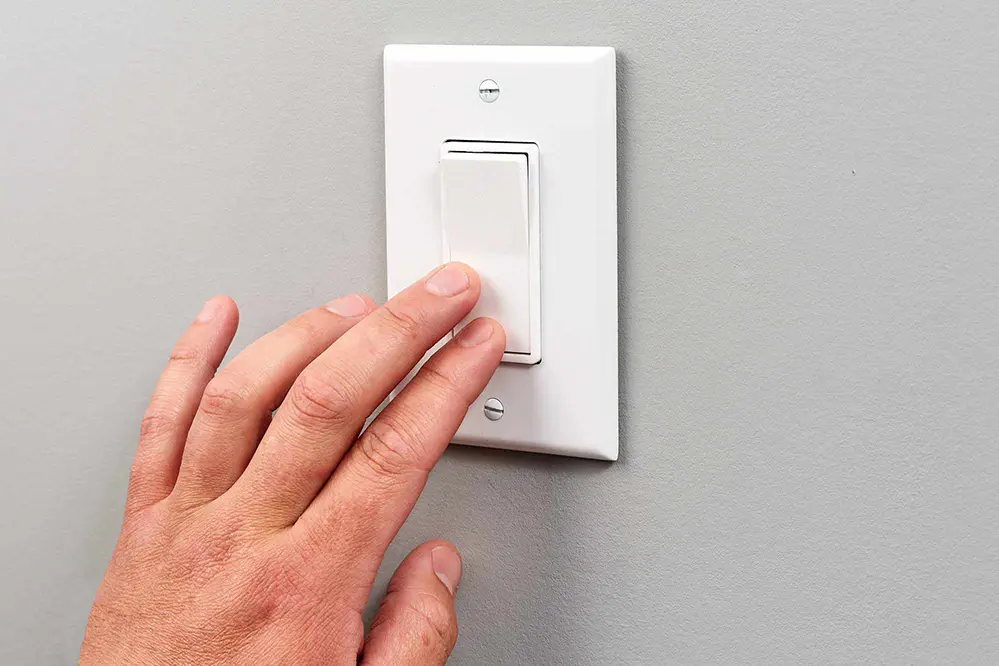
Single pole switches are one of the most common types of switches used in household lighting.
Since 2016, these switches, a standard solution in residential wiring, have been pivotal in illuminating homes with a simple and effective mechanism. Households across the country rely on their straightforward on-and-off functionality.
Moreover, it’s not just homes that appreciate their functionality; they’re instrumental in commercial spaces where uncomplicated light control is prioritized over programmable settings. Offices benefit from these reliable switches every day.
Despite the advent of more complex systems, single pole switches remain valuable due to their ease of use, reliability, and cost-effectiveness. Their consistency is particularly important in environments where additional features like multi-way switching are not required.
The installation and maintenance of single pole switches are relatively straightforward, underscoring their enduring popularity.
3-Way/4-Way Switches
3-way and 4-way switches extend the versatility and convenience of residential lighting control.
Since the mid-20th century, these advanced switching systems have enabled homeowners to control a single light fixture from multiple locations. This functionality significantly enhances the user experience, particularly in larger homes.
In essence, a 3-way switch setup involves two switches controlling one light, while a 4-way switch introduces a third switch into the loop. This allows for even greater flexibility in controlling lighting in complex spaces.
Installing these switches, however, requires a bit more electrical know-how. The configuration of 3-way and 4-way switches demands careful attention to wiring diagrams and connections to ensure they operate correctly and safely.
These systems ultimately provide an added layer of convenience by supporting customizable light control in various settings.
Multi-Location Switches
Multi-location switches offer a seamless lighting experience, allowing for versatile control over different areas within a space. They provide an advanced method of light management that can be particularly beneficial in larger homes and commercial properties.
These switches serve as an upgrade from traditional single-location switches.
Essentially, multi-location switches enable multiple dimmers to control the same lighting circuit.
This capability translates to a more dynamic and user-friendly lighting environment, facilitating effortless adjustments from various points.
By incorporating multi-location switches, users can finely tune the ambiance of a room while minimizing the need for constant adjustments.
Such systems exemplify innovation in lighting control, empowering users with the ability to achieve optimal illumination with unparalleled ease and precision.
Ultimately, the inclusion of multi-location switches elevates any environment, merging convenience with sophisticated dimming control and light management solutions.
Plug-in Switches
Plug-in switches offer a practical solution for easily adding dimming capabilities to standard lamps and fixtures.
- Ease of Installation: They simply plug into existing outlets without any need for complex wiring.
- Portability: Can be moved and used in multiple locations around the home or office.
- Compatibility: Works with a range of light fixtures and bulb types, including LEDs and CFLs.
- Cost-Effective: Often more affordable than hard-wired dimmer switches.
- Versatility: Perfect for rental properties where permanent changes are not an option.
- User-Friendly: Typically feature simple controls, often with a slider or dial mechanism.
These switches are ideal for users seeking a quick and flexible lighting control solution.
With plug-in switches, they can enhance their lighting setup with minimal effort and maximum convenience.
Incorporating such switches can significantly improve the versatility and functionality of any lighting system.
Smart Switches
Smart switches integrate seamlessly with modern home automation systems. Utilizing advanced technologies, they offer unmatched convenience and versatility for controlling lighting.
These devices provide an elevated experience by connecting to home networks, allowing users to adjust their lights via smartphone apps or voice commands. Consequently, they can enhance energy efficiency and transform the residential or commercial lighting landscape. Smart switches also often include features like scheduling, scene-setting, and remote access, ensuring optimal flexibility and control.
Particularly valuable for their potential to optimize daily routines, smart switches can be programmed to adapt to personal schedules. For instance, lights equipped with a dimmer switch can gradually brighten in the morning or dim at night, enhancing the user’s comfort and well-being.
Ultimately, smart switches represent the pinnacle of modern lighting control, offering sophisticated features that significantly improve user experience and energy management. Their integration into a home or office setting not only contributes to better lighting efficiency but also aligns with the growing trend towards smart, sustainable living environments.
Pros and Cons of a TRIAC Dimmer
TRIAC dimmers present numerous advantages, a hallmark of technological innovation, which are indispensable. Firstly, they offer cost-effective solutions for varying light intensity levels, fostering energy savings and extended lamp life. Simplified installation and compatibility with a wide range of incandescent and halogen bulbs enhance their appeal, making them a favored choice for both residential and commercial applications. On the downside, TRIAC dimmers may exhibit incompatibility with certain types of LED or CFL bulbs, potentially leading to flickering or limited dimming range. However, ongoing advancements in dimmer technology promise to address these limitations, further solidifying their utility in modern lighting systems.
Cost Efficiency
Investing in a TRIAC dimmer can lead to significant cost savings over time by optimizing energy usage.
- Reduced Energy Consumption: TRIAC dimmers allow for adjusting light intensity, thus consuming less power.
- Extended Bulb Life: By operating at lower intensities, light bulbs last longer, reducing replacement frequency.
- Lower Utility Bills: With a consistent reduction in energy usage, users can expect noticeable savings on electricity bills.
- Reduced Maintenance Costs: The extended lifespan of bulbs translates to fewer replacements and maintenance needs.
These factors collectively contribute to an overall reduction in operational costs.
Businesses and homeowners alike can benefit from these long-term financial advantages.
High Voltage Support
High voltage support is paramount for TRIAC dimmers.
Supporting high voltage levels ensures that these dimmers perform robustly in various scenarios. TRIAC dimmers excel not only in residences but also in more demanding environments, such as commercial spaces that require higher power capacities. Consequently, users can rely on these devices for consistent performance in diverse settings.
Efficiency is enhanced by high voltage capacity.
Compatible with a broad range of lighting systems, TRIAC dimmers offer notable advantages over traditional dimmers. For instance, they can manage higher loads without compromising on functionality — an essential aspect for larger installations.
The high voltage support of TRIAC dimmers represents technological advancement in light control solutions. As the industry trends toward smarter, more efficient systems, the capability to handle elevated voltages without degradation positions TRIAC dimmers as a resilient choice. Their reliability under varied voltage conditions further underscores their indispensability in both retrofits and new constructions.
Easy Installation
The simplicity of installing a TRIAC dimmer allows for swift, stress-free integration into any existing lighting system, minimizing the disturbance to the environment.
Users appreciate straightforward instructions that make the installation process intuitive.
Typically, TRIAC dimmers come with pre-set configurations, optimizing for quick deployment without extensive technical adjustments.
Installation generally involves basic wiring connections and securing the dimmer in place, requiring only standard tools.
Experienced electricians often find the process so streamlined that they can complete installations in a fraction of the usual time, increasing overall project efficiency.
Thus, even those with modest electrical expertise can manage the installation, leveraging comprehensive guides and customer support for any unforeseen challenges.
Reliability
TRIAC dimmers are celebrated for their unsurpassed reliability, ensuring consistent light control across various applications.
- Durable Components: Engineered with high-quality components, TRIAC dimmers boast longevity and robustness.
- Stable Performance: Even under fluctuating voltage conditions, they maintain steadfast performance without compromising light quality.
- Low Failure Rates: Their design minimizes the chances of malfunction, providing confidence in long-term projects.
- Minimal Maintenance: Requiring little to no upkeep, TRIAC dimmers are cost-effective over their lifespan.
Such reliability makes TRIAC dimmers a preferred choice for both residential and commercial lighting solutions.
Users find assurance in the consistent operation, reducing downtime and associated repair costs.
Ultimately, the robust nature of TRIAC dimmers enhances user experience, standing as a testament to superior engineering.
Conclusion
In conclusion, understanding what a TRIAC dimmer is unlocks a new horizon in light control.
Their robustness ensures reliability without compromising quality.
Moreover, these dimmers’ minimal maintenance needs and low failure rates instill confidence in their enduring performance.
For those seeking an advanced solution in both residential and commercial settings, TRIAC dimmers offer an unparalleled combination of innovation, durability, and cost-efficiency. Their steadfast operation promises to illuminate spaces brilliantly, fostering an environment where creativity and productivity shine.
